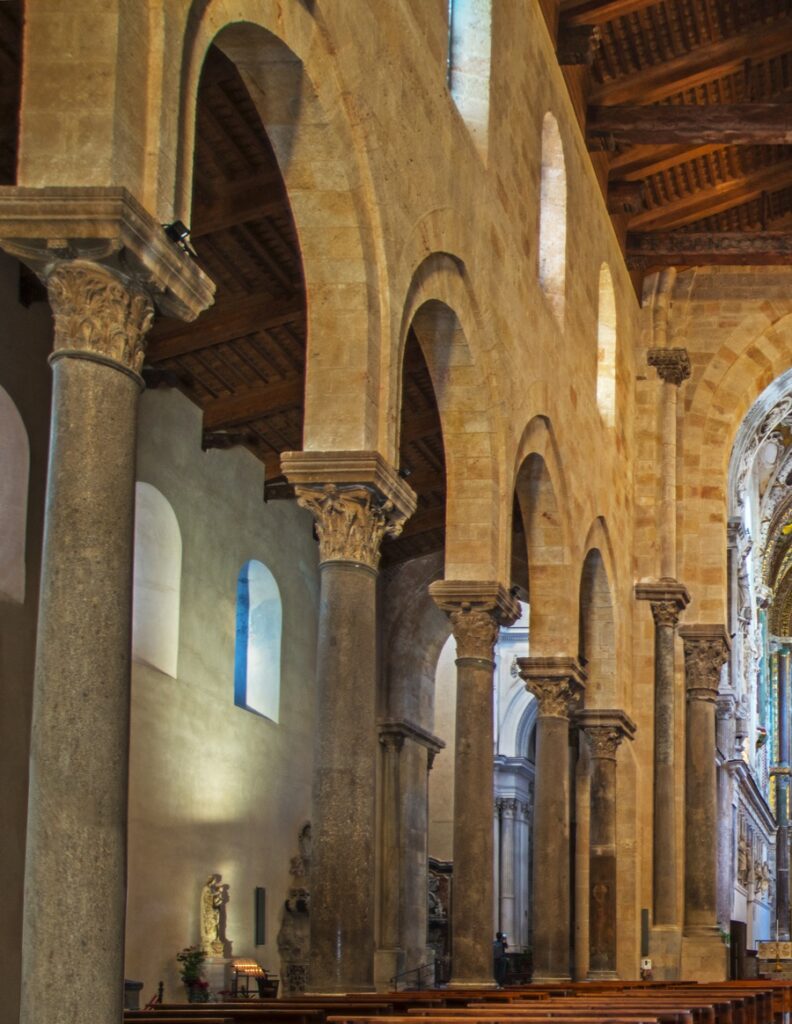The capital is the structural element connecting the column to the part of masonry above it, supported by an architrave or an arch. The capital, normally made of a stone material, is often decorated according to the style and age of its creation.
Inside the Cefalù Cathedral, among the oldest architectural elements that were reused in the construction of the Temple of Roger, there are sixteen columns that divide the nave from the side aisles. They are composed of marble bases and Corinthian capitals, each formed by conical trunks decorated with two acanthus leaf crowns with tops folded outwards.
The original form of the ancient capitals, which can be dated to between the ages of Hadrian and Antoninus, has been compromised. This has resulted both from the manual interventions carried out on the ancient ornaments by medieval stone masters in order to adapt them to the new construction, and from problems derived from their poor conservation over the centuries. In the precision of the carvings, which feature a multitude of phytomorphic decorations with clear decorative patterns and rigid symmetry, there are proto-Romanesque capitals characterised by the presence of human figures, probably created by craftsmen of different origins. Among these, the sources refer not only to local sculptors, but also to a master linked to the Apulian environment, who is said to have embellished the sculptural decoration of the capitals of the triumphal arch. It is worth remembering that the heterogeneous coexistence of artists has left stylistic evidence resembling some Byzantine reliefs in southern Italy and Sicily. 